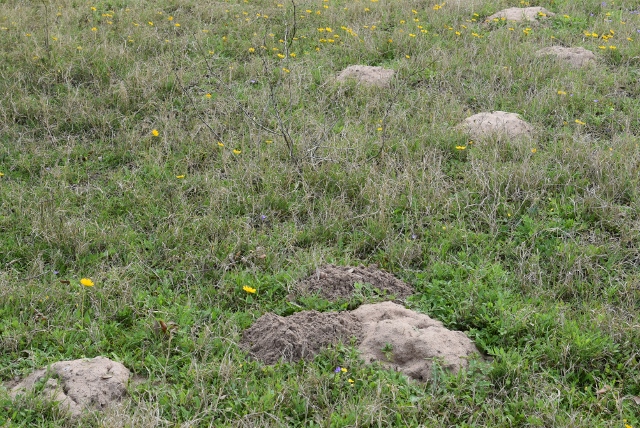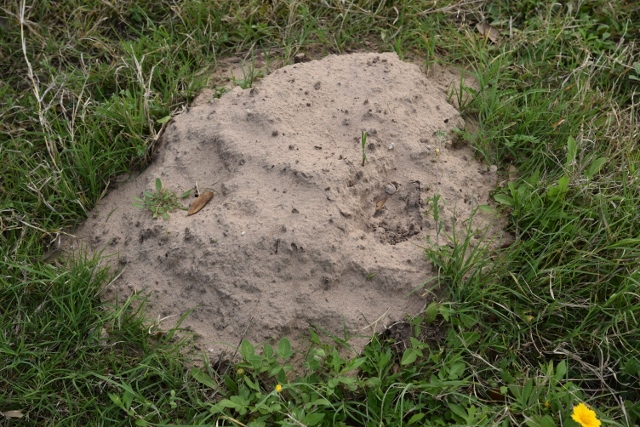By Anita Westervelt, Texas Master Naturalist

Texas pocket gophers are prevalent in sandy soils of South Texas. The critters rarely surface, which is why they aren’t often seen, but their mounds leave tell-tale evidence that they’ve taken up residency.
The gopher’s distribution in South Texas is wide but patchy because of its requirement for loose, sandy soils. They are found in Hidalgo County and as far north as Val Verde County, west, and San Patricio County on the east. In the order of Rodentia, these busy, drab grayish-brown rodents average 12 inches from nose to tip of tail. The tail is about four and a half inches long. Males are slightly larger than females.
In Hidalgo County, mounds can reach to five inches in height and 12 inches in diameter. Texas pocket gophers also are found on Mustang and Padre Islands where mounds, in that moist sandy soil, can reach from 17 to 23 inches in diameter.

Tunnels under the mounds are both deep and shallow. The gophers are loners; they live alone except to breed and nurse their young in the deep tunnels, which can run as long as 100 feet and include many short side branches. Shallow tunnels are for foraging. Their food consists largely of vegetation, including roots of grasses, and roots, stems, leaves and flowers of species of sunflowers.
The critters seem to have a fun sense of humor. In a now-you-see-it-now-you-don’t manner, a Texas pocket gopher will seize the roots of a plant — from within its tunnel — and pull the plant into its burrow, leaving any viewer to wonder why a plant would suddenly sink below the earth’s surface. I wonder, do critters sometimes laugh at us humans?
My research didn’t cover laughing, but I did find where the gopher will emit a wheezy call and gnash its teeth if it has to defend its home. In order to curtail those harrowing experiences and avoid predators, like coyotes, skunks and snakes, Texas pocket gophers mainly stay underground. For added security, they plug tunnel entrances with soil.
Some landowners look favorably upon these burrowing rodents for their important job in helping aerate the soil.
Anita Westervelt is a Texas Master Naturalist and provides monthly articles to The Monitor.